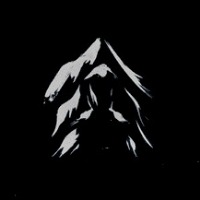I was also a little disappointed to realize that "Dungeonscrawl is now part of Roll20" meant a company merger, rather than functionality. I'm enthused to see how it plays out, and I don't envy you the task of integrating this new type of map drawing into the existing map drawing tools in the VTT. My expectation is either that it will be an optional/alternative tool that the user can select when creating a new map (akin to the dynamic lighting), or that some aspects of the toolset (such as automatically connecting drawn spaces and painting in floor grids) will replace/augment the existing drawing tools. Dungeonscrawl is a great service, combining several really great tools, which I have used to easily draw dungeon maps for years. But the tools (such as automatically connecting drawn spaces, drawing terrain features like doors and stairs, drawing in a set type of floor) are more interesting than the full service, because dungeonscrawl as it is today is really well-suited for drawing fantasy dungeons, and not much else. If you are drawing outdoor maps you can paint the ground with different colors to suggest different terrain types (which is great, I'll admit), but you need to have all of it enclosed with walls. It feels like a dungeon. If you want to draw the interior of a building...it looks like a fantasy dungeon. When I've made maps that are spires of rock that you must jump across, maps of the deck of a ship, and maps of a space station...well, I've used the regular roll20 drawing tools for those, because the output of that feels WAY less like an underground location. Again, I LOVE dungeonscrawl and have used it for years, but as it is now, it's dedicated to producing a very specific type of map. Andrew Searles said: Hey Ken, Thanks for this question. Ken S. said: My big question would be: how does something open-ended like this play with Roll20's historic limits on map size? The maps in the video are clearly larger than the recommended 50x50 maximum. And real-time dungeon crawling isn't likely to do a good job of filling a small map, it's going to need room to sprawl. So, what are the plans there? The primary reason for those limits is performance. You CAN make a bigger map if you want. The biggest thing that leads to performance problems is high-resolution images. For now, while we're not integrated with the VTT, this will still be a problem, BUT, when we do integrate, it won't be! Dungeon Scrawl procedurally generates these maps and doesn't use any images to create the base map styles. That means it's lightning-fast. We're still not 100% sure how we're going to integrate it into the VTT, but we know we want to take advantage of this light weight solution. I hope that answers your question. Thanks for asking! As I wrote, I've been using dungeonscrawl regularly to make maps for various fantasy RPGs that I've run here on roll20 for the past three and a half years. I make the map, I export it, I import it into roll20, and if I feel like it, I draw in some of the walls (and this year, doors and windows!) in the dynamic lighting layer. That's all to say that the dungeonscrawl maps are small enough is size and simple enough in resolution to not tax the system, even with 100 square x 100 square maps. Now, it must be said that that's kind of meaningless, since the dimensions of the dungeonscrawl map doesn't really matter. Since the dungeonscrawl maps all have grids drawn in, I turn OFF the grid in roll20, then size the imported image to fit in the available space (I rarely go over 60x60 in roll20) and the tokens to match. If you've ever imported an image with a grid, you know how it is nearly impossible to get the image grid to line up with the roll20 grid. I gave up trying to get them to match after the tenth map or so. Anyway, I hope that's encouraging.





































